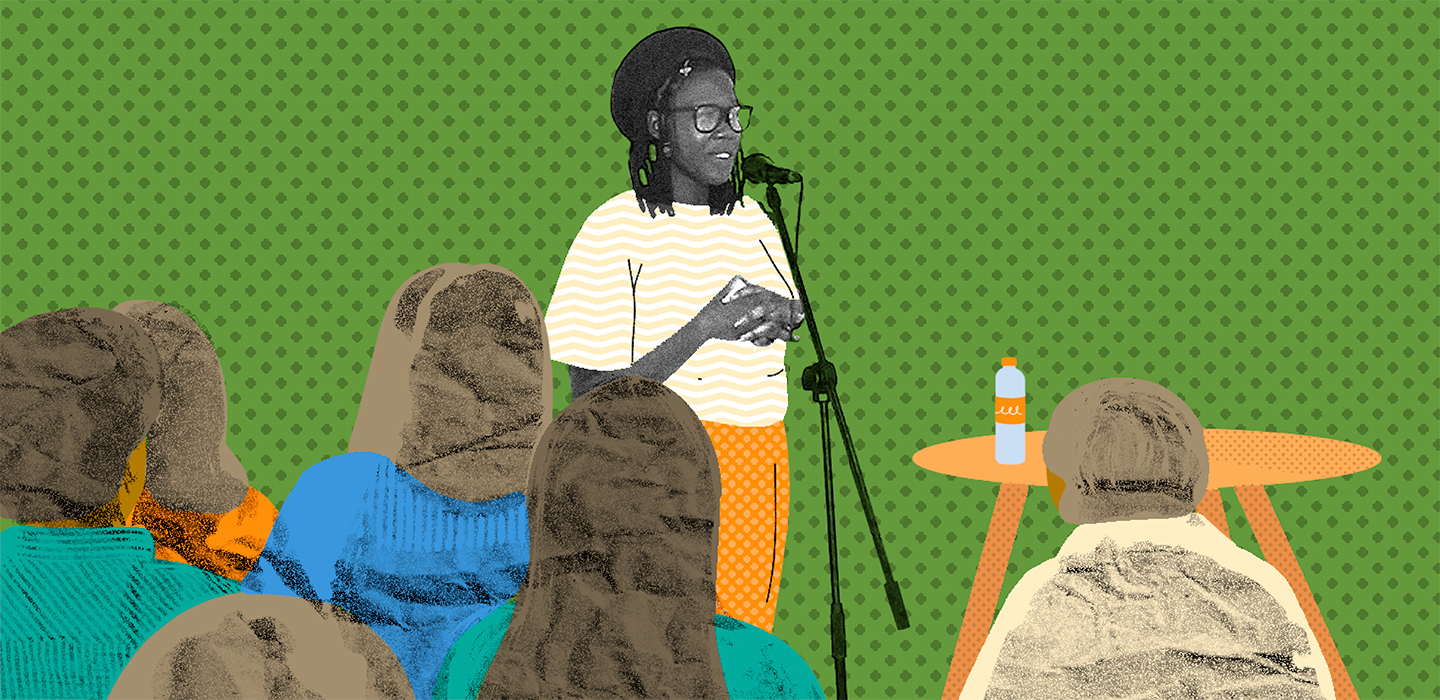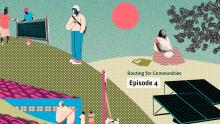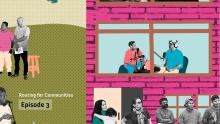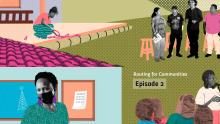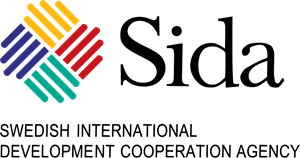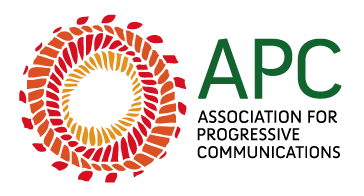#2 The vibrancy of the Kibera residents
Our second episode takes us on a trip to Kenya to visit TunapandaNET, an initiative that combines digital networks with community-led action to enable communication, education and health in Kibera, the biggest slum in Africa.
The TunapandaNET community network has been championed by the Tunapanda Kibera CBO, a dynamic youth-led community-based organisation (CBO) committed to fostering community development through affordable internet access, skill building and livelihood opportunities. Its mission is to empower and uplift community members by providing them with the necessary tools, resources and support to thrive in the digital age.
We will find out more about this initiative and the community networks movement through the voices of Risper Akinyi Arose, a young resident from Kibera, and works on many projects of digital inclusion and communication, and Peter Bloom from Rhizomatica, which works to promote community networks and technical autonomy and training.
Histories and voices that are intertwined, connected by one common thread: building internet and communication community networks.
Hi, my name is Renata Porto, from São Paulo, Brazil, where our podcast studio is located. I will be leading you through out this entire season, comprising 12 episodes, on community-led initiatives.
In this second episode, we will dive into a story from Kenya: the TunapandaNet. This project offers support for many communities in the deployment of community networks, as well as digital literacy and safety, in a community that is widely known as Africa’s largest slum: Kibera.
“We had a training on digital literacy basics on how to use Zoom to mobilise. How to protect yourself when engaging in online spaces.”
“The point of that is really to help people organise. It's about helping people create. Create the knowledge or gain the knowledge that they need to operate and maintain their own networks.”
In order to tell you this story, our team talked to Risper Akinyi Arose. She is a young resident from Kibera, who works in many projects of digital inclusion and communication. We also talked to Peter Bloom from Rhizomatica. He’ll help us understand the processes that mobilise internet and intranet community networks across the globe. Everything in order is to guarantee autonomy and connectivity in regions where the population is offline because telecom corporations do not see profitability in such communities, ignoring local demands, commonly following the trend of what many governments also do.
So, join me!
Routing for communities: An audio journey tracing community connectivity around the world.
“Kibera is a division of the Nairobi area, Kenya, and the largest urban slum in Africa. [A] 2012 article in The Economist suggested that Kibera may be the most entrepreneurial space in Kenya, with the opportunity to play a big role in the economy of the country. However, the vibrancy of the Kibera residents participating in the social, economic, and political space in the country is often scriptable by obstacles such as the digital divide.”
The audio you just listened to comes from the audio documentary, “Women from Kenya Speak Up”, produced by TunapandaNet. The presented description that follows helps us get an idea of local realities looks like in this community’s network project we’re discussing today.
“My name is Risper Akinyi Arose. I am 26. Yeah. I'm 26 years old. I was born and raised in Kibera and I'm the third one in a family of five siblings.”
Risper has studied Gender and Development. She started to work with community networks in 2020, after graduating from college. But before we tell you more about Risper’s work at TunapandaNet, I’m going to talk about Kibera.
Located in Kenya’s capital Nairobi, Kibera is formed by people coming from different regions of the country in search of better life opportunities. Around 60% of Nairobi’s over four million population lives in informal settlements. Kibera alone is home to 250,000 of them.
“So Kibera is a big portion of Nairobi where most people from the countryside. When they first get to Nairobi – because Nairobi is usually where people want to come and look for jobs. So when they get to Nairobi, and especially if you don't have enough money to afford good housing, Kibera would be like one of the places to consider, because the housing is a bit cheap. So, you'll get a house, the houses are parked in one area, so the first thing you would see when you get to Kibera is a lot of brown roofing. I think we can get a photo… But just like a lot of houses together.”
Kibera is also one of the territories that still sees completely offline areas. Internet access is not the only missing piece for those living in this area: only 20% of the community officially has access to electricity. But somewhat informal arrangements also guarantee access to light for many of its dwellers. Access to water and sewage systems is another serious issue the local population has to deal with.
Living with her parents in the community, Risper talks to our team via a video call. However, we are not able to see her since her camera was turned off during the entire interview – a strategy to curb data consumption during our conversation.
In the research for this episode, we were able to find some of Risper’s photos on social media. In one, we see a young, Black woman with a big smile on her face and dreadlocked, shoulder-length hair adorned by colourful beads. This young woman’s voice matches exactly what we see on her social media presence.
Nowadays, Risper is the coordinator of gender and community engagement at the TunapandaNet project, working with community-led networks. Talking about her work, she tells us that it covers “beyond issues of digital accessibility”.
“Now my work was to engage the community to see how they utilise the internet to create capacity-building for the community, to understand the benefits of the internet, to make sure that our work was very gender-sensitive and that we are targeting both men and women. And also to curate interventions where the communities would now not only just consume the content that was already online, but also start thinking of ways that they can produce content that matters to them”.
TunapandaNet project, an urban internet community-led network aimed at improving education and health via formation and learning tools in the communities. In 2016, when the project was launched, the idea was to complement the education system. By doing so, it would make sure, aside from traditional means and educational entities, that community schools would be able to come up with ways of engaging students via the online world. Over time, many other projects were created and established.
During the COVID-19 pandemic, from 2020 onwards, the challenge has been focused on guaranteeing access to education amidst lockdowns in Kenya. For that, projects that included video production and teachers’ training programmes were developed so that they could use different videocall software and apps.
The co-creation of projects with the community, alongside TunapandaNet, has also contributed to organisational and activist dynamics in various areas, such as healthcare, education and gender violence. Before them, these fights for rights took place exclusively in face-to-face initiatives. With the pandemic’s social distancing policies, they started to be conducted offline by using platforms such as Zoom.
“From this gathering, we had a training on digital literacy basics on how to use Zoom to mobilise. How to make sure that the communication is still circulating within a big team. How to protect yourself when engaging in the online space. How to make sure that they amplify their voices using the different platforms. We also talked about podcasts; using podcasting to make sure that they can still create awareness around the different areas that they were working on.”
Another important front at TunapandaNet is working on promoting and supporting other emerging and existent community-led networks in Kenya through training actions. That’s what they did in the first National School of Community Networks in Kenya.
The National Schools were a collective capacity-building effort for the creation, development and consolidation of community networks. It was a way to cultivate bottom-up, sustainable approaches to communication and meaningful connectivity. Beyond Kenya, they also took place in Brazil, Indonesia, Nigeria and South Africa between 2021 and 2023.
In addition to being a learning powerhouse, each school seeks to be a multiplier of community-led initiatives, bringing together people from different communities around the country and fostering collaboration with other organisations. In Kenya, TunapandaNet was the one leading and facilitating the school’s process, while supporting those building the community networks on the ground.
“Through the support from APC, we curated our mentorship and training programme that looked into the different pillars of what it takes to start, what it takes to operate, what it takes to sustain a community network. For the past two years, we have worked with 11 organisations that now are community networks, just making sure that they understand what a network and infrastructure look like, what sustainability will look like for their community network, and other add-ons that they can do with the network and infrastructure that they set up that it's beyond just the infrastructure, but also creating value to the community, so how does the connectivity act as an enabler of what the communities already doing.”
While I am telling you Risper’s and TunapandaNet’s stories, it is clear that, even during hard times and great difficulties, these communities have been creating spaces of solidarity and hope, as well as initiatives that concretely change the local population’s lives. Community-led networks’ initiatives that enable the construction of local content, as those presented by Risper, can be the seed to inspire other communities out there.
But before implementing projects like these, there’s a whole articulation alongside processes, organisations and people involved in the development of community networks. One of these people is Peter Bloom, who also talked to us in a videocall straight from Mexico.
“Hello.
Hello, Peter. Good morning. How are you?
Good. Thanks.
Can you hear me?
Yeah, can you hear me? Okay.
Yeah. Yeah, I can.
Okay. So, my name is Peter Bloom. I am originally from Philadelphia in the United States. And I've lived outside of the US since about 2009. I lived in Nigeria for a couple of years and then I've been in Mexico since about 2010 in a place called Oaxaca, which is where I'm joining you from today in South-eastern Mexico.”
Peter started off as a community organiser, working in alternative and independent communications media. Nowadays, he is the coordinator of Rhizomatica, an organisation he founded in 2009. Rhizomatica uses information and communication technologies to facilitate development and community organisation.
“Rhizomatica started kind of as a fusion between a community media project and a connectivity project. I was working in the Niger delta in Nigeria with some communities facing some really harsh human rights and environmental rights issues and was doing participatory video work with them and then tried to figure out how we could get the videos off of their phones and to the public without going through the cell phone network. And that's kind of how Rhizomatica started trying to figure that out with no prior knowledge of networking or technology really of any sort. And ever since; yeah, I've been working on that. I came to Mexico like I said, collaborated with some community radio projects and then from that and around 2012, we started a community cell phone network with a bunch of communities up in the mountains – Indigenous communities here in Oaxaca.”
Throughout all the actions in multiple communities across the globe, Peter believes it’s necessary to understand that the right to communication is a fundamental right in the world we live in.
“Where I think the rights come in is basically, before kind of enabling other rights, I think there is a fundamental right to communication and information. Increasingly, we live in a digital, a digitised world, and so having some control and some understanding and some ability to participate in the infrastructures that provide our access information, I think, is crucial.”
Talking to Peter, we thought about some links between his way of seeing the matter of communications and what TunapandaNet has been doing, especially when it comes to the way technology can support ensuring rights and access to communication. As mentioned by Risper on the Tunapanda project, the initiatives are meant for the communities to become both consumers and active producers of meaningful online content – made by them for them. In a similar sense, a community network can be a solution to the lack of connectivity that is co-created and managed by local people – and not something totally pushed from the outside in.
Taking part in the digital world may seem as completely advantageous at first. But that’s not exactly how it goes. At TunapandaNet, one of the initiatives involves creating a podcast on online gender-based violence, so that women from the community can talk about this problem. The podcast TunaBonga was posted on digital streaming platforms and is also broadcast at Kibera’s local community radio station. The name TunaBonga means "we are conversing" in Swahili.
[TunaBonga podcast audio]
The risks of online gender-based violence are only one example of what internet connectivity may bring as a negative outcome. Yet, Peter believes that it is through working in the communities that one is able to strengthen autonomy while also dealing with these other issues at the same time.
“The point of that is really to help people organise. It's about helping people create. Create the knowledge or gain the knowledge that they need to operate and maintain their own networks. So really the kind of end goal for us is autonomy – whether individuals or of communities directly. It can also create issues. I wrote an article recently about just trying to unpack a little bit some of the negative aspects of connectivity. I think our job working on community networks is to help facilitate information, knowledge, technology transfer and all that but inside of a process, whereby the communities are defining what they want to do with the connectivity, how they want to use it and kind of what the benefit that they're looking for. And also, what their concerns are about the possible negative impacts of the internet on young people, on women, on anyone in the community really, on cultural practices and so on.”
Well, and this is the end of our episode. I hope the stories that were told by voices from Kenya and Mexico were a source of learning as well as hope. And that the initiatives shared in this podcast lead us to act, together and collectively.
If you’ve liked this episode, please recommend this podcast to those you know will appreciate it as well. You can follow the season on the main podcast platforms or on APC’s website: routingforcommunities.apc.org
On our podcast’s website, we also bring in references and links for you to know more about the themes and experiences that were discussed in this episode. Go there and check it out.
In the third episode, I will tell you about an experience straight from Mexico: the Wiki Katat, the first Indigenous, virtual operator providing internet and mobile phone services in the country.
You have listened to the second episode of “Routing for communities: An audio journey tracing community connectivity around the world”. This is the podcast of the Local Networks initiative, a collective effort led by APC and Rhizomatica
Production: Rádio Tertúlia.
In this episode, you have listened to audio content from SABC News, Tunapanda Institute, as well as to the song, “Kibera Ni Kwetu”, by Futwax Daniel.
Thanks, and see you next time!
Credits
This podcast is an initiative from the Association for Progressive Communications (APC) and Rhizomatica, produced by Rádio Tertúlia.
Script and production: Vivian Fernandes
Script translation: Thiago Moyano
Script proofing: Drew McKevitt
Presentation: Renata Porto
Editing and voice-over support: Beatriz Pasqualino
Sound: Lua Gatinoni
Coordination: Beatriz Pasqualino and Débora Prado
Consulting Board: Flavia Fascendini, Kathleen Diga, Cynthia El Khoury, Bruna Zanolli, Nils Brock and Daniela Bello
Illustrations: Gustavo Nascimento
Web design: Cathy Chen and Avi Nash
